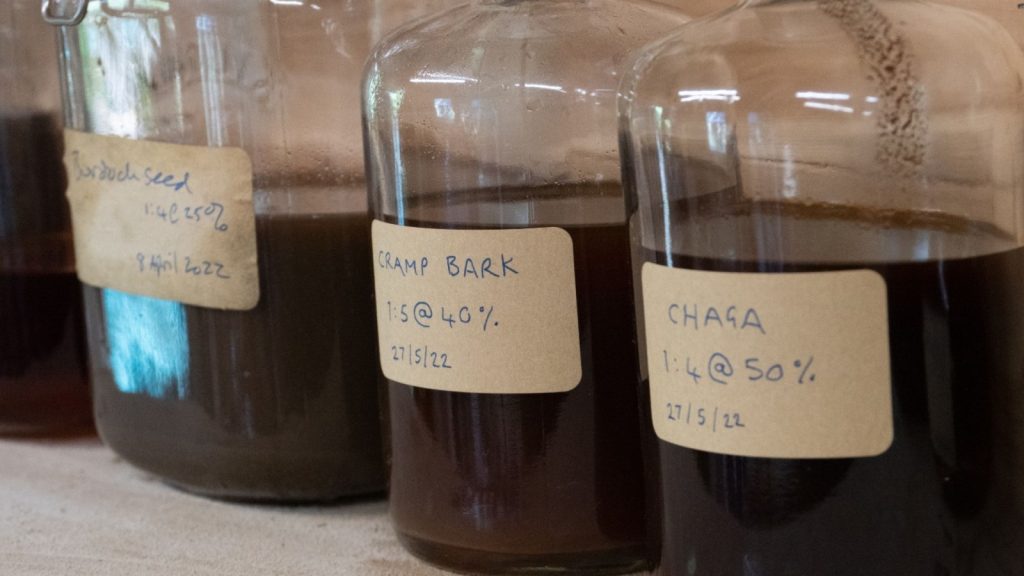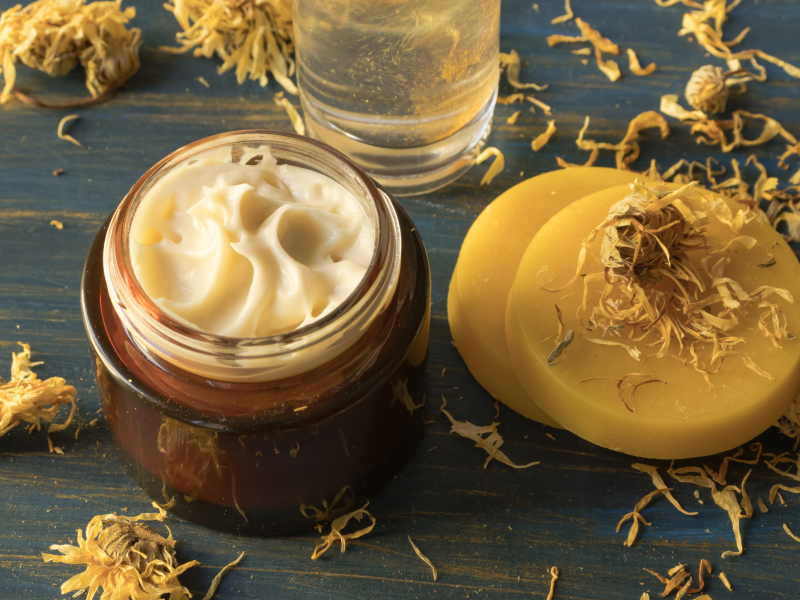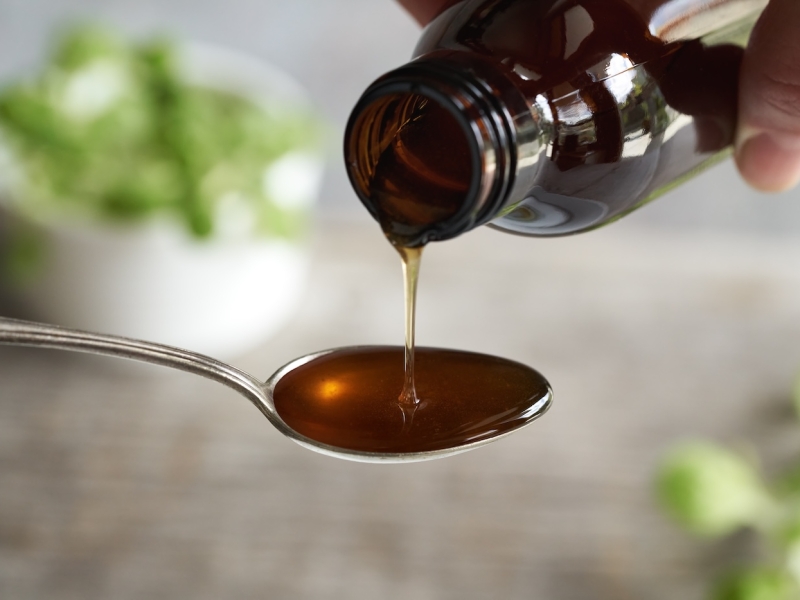How to make a percolated tincture
What is a percolated tincture?
If you are diving deeper into the herbal world, then percolated tinctures are for you. You can make a percolated tincture by grinding a dried herb that is packed in a percolating column and utilising gravity to pass the solvent medium (known as the menstruum) slowly through the herbs over a 24-hour period. It is quicker than the maceration method, and better for making stronger extracts, though it is a little more technical to get set-up. Percolates are always made with dried powder and you can’t percolate fresh herbs.
What is a percolated tincture used for?
Use percolated tinctures for making stronger extracts more quickly.
What is the difference between a macerated, percolated and decocted tincture?
Macerated tinctures are made using an ethanolic-aqueous (alcohol-water) blend as a solvent, with fresh or dry herbs, soaked and stirred for a couple of weeks before pressing and filtering. Can be combined with glycerine. Good for mucilage and resin containing plants. Simple and cheap to set up.
A percolated tincture is made by gradually passing the alcohol and water solvent mix through finely ground herbs contained within a narrow percolating column. Good for stronger extracts (1:1 or 1:2). There is no need to use a press to squeeze out the last drops. Made with dried and not fresh herbs. Not used for plants high in resins or mucilage or that swell too much. It requires more attention to technical detail than macerated tinctures.
A decocted tincture involves two separate processes; firstly macerating or percolating herbs in a strong ethanol-aqueous blend, pressing and filtering as required. Secondly, to decoct the remaining marc from the initial tincturing stage in water and then adding the pressed and filtered extract into the tincture for your final decocted tincture.
Which herbs can I use to make a percolated tincture?
Use any finely cut dried herbs (there are some exceptions to this rule where a vacuum pump can be used). The particle size should be around 20 mesh, equivalent to 0.84mm, like a coarse powder. Denser plant parts like seeds and barks usually pack more easily than the lighter leaves and flowers. Starchy roots can also swell somewhat. Here are some examples:
- Arnica fresh flowers
- Burdock root
- Calendula flowers
- Cayenne
- Chamomile flowers
- Lavender flowers
- Lemon Balm leaf
- Marshmallow root
- Mint leaf
- Mullein flowers
- Plantain leaf
- Pokeroot
- Rosemary leaf
- St John’s Wort fresh flowers
- Thyme leaf
- Yarrow leaf


How do I make a percolated tincture?
Prep Time
10 mins
Rest Time
1 hour
Infusion Time
12-24 hours
Ingredients
- 250g dry, coarse herb powder
- 750ml ethanolic-aqueous menstruum (25% vodka)
Equipment
- Percolation cone – or equivalent ‘bottle-perc’ (a glass bottle with the base cut off)
- Percolator stand
- Valve with drip-tap to control drip rate
- Cotton balls or filter paper – unbleached coffee filters are good
- Tamping device (e.g. a dowel)
- Measuring beaker to measure menstruum
- Scale to weigh powder
- Pen and label

Method
- Weigh out the coarse herb powder and place in a tub that can be covered.
- Moisten the herb powder with approximately 250ml of the menstruum (vodka). The herbs should look like moist sand (but not wet) and be left to rest for at least 1 hour before packing in the percolator.
- Whilst the herbs rest, set up the percolator bottle; put a cotton wool ball in the neck of the bottle, then put a valve with the drip-tap in on the bottle and place the percolator in the stand.
- Next you start to carefully pack the moistened herbs in the percolator.
- Add 1/3 of plant material and pack down.
- Tamp the herbs down with a dowel. Its really important to do this properly; if its too loose the powder floats and if its too tight then the liquid cannot get through. If its unevenly packed then the menstruum can find channels and create an uneven and incomplete extract. Percolation is a good example of how herbalism is both an art and a science.
- Then add the next 1/3 and repeat. And again until filled.
- Press a coffee filter onto the top of the material weighed down by a weight to keep the herb powder from floating up when you add solvent.
- Next you can add the menstruum. You should see the solvent flowing through evenly through the plant material. Leave the valve on the drip-tap open or the air will back up and bubble through which can disturb the form of the packed-powder. Keep the valve open until the solvent drips all the way through and out of the drip-tap opening. When it gets to the bottom and starts to drip, close the tap and let the menstruum sit for 12-24 hours to optimise transfer of the phytonutrients into the liquid solvent.
- Then open the valve to let it drip at the rate of 20 drips a minute (1 drip every 3 seconds) until complete leaving approximately 500ml tincture.
- Label and date your percolated tincture.


A summary from King’s American Dispensatory:
“II. BY PERCOLATION.—The article or articles should be reduced to a powder of a proper degree of fineness, or, where this can not be done, should be sliced, bruised, or rasped, etc. They are then to be first covered with the menstruum with which the tincture is to be made, and allowed to stand until they are moistened throughout, which step generally requires from 24 to 36 hours. The whole is then transferred to a percolator, and the menstruum gradually poured on, and allowed to percolate or filter until the requisite amount has passed (see section on Percolation, under Fluid Extracts). The preparation of tinctures by percolation is, with a few exceptions, the method now generally pursued by all pharmacists of this country.”



